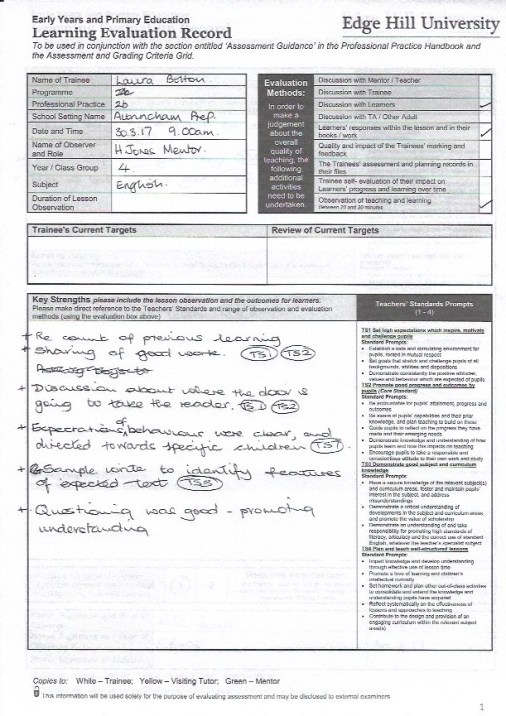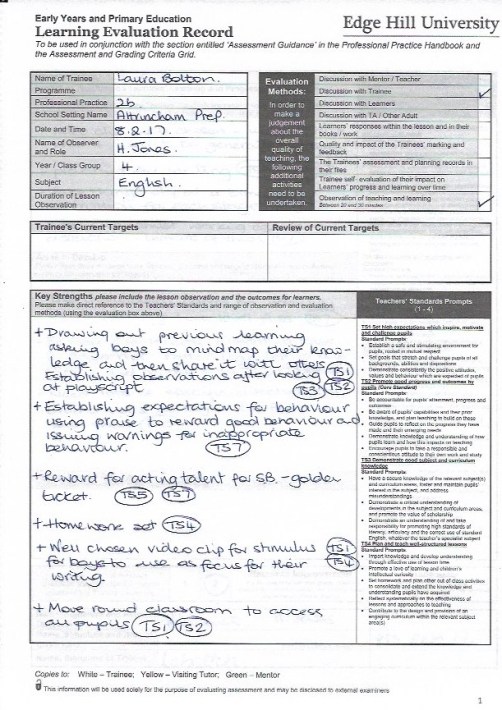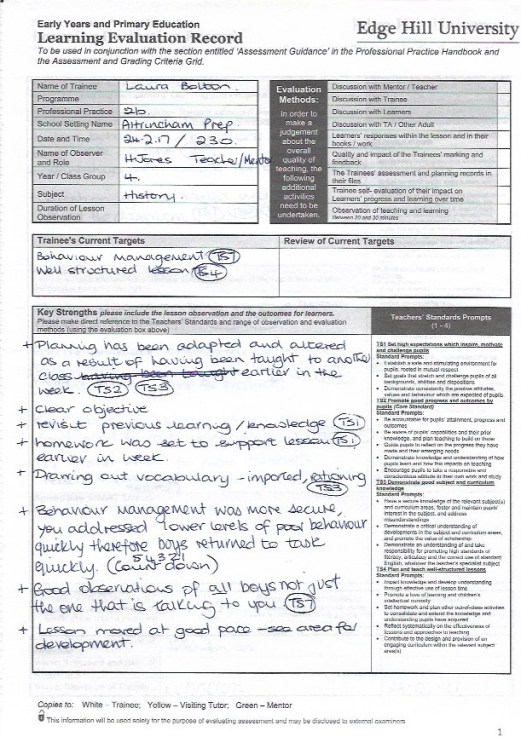‘High- quality marking of written work makes a vital contribution to pupil progress. Marking provides children with a clear and precise guide to how to improve their next piece of work and a clear expectation that they concentrate on improving this aspect as the next small step in making progress in their learning overall. In effect, marking is short- term target setting for pupils, as well as an opportunity for teachers to make accurate assessments of pupil progress and needs.’ – Desford Primary School (2017).
During my placement, there was no marking policy. However, I agree with the statement above and consider effective marking as a crucial form of assessment. The children love receiving feedback and next steps. It is evident that I have also used positive reinforcement within my marking to praise the child for producing such a fantastic piece of work. I always ensure to begin with strengths and then provide areas for improvement. I expected the children to respond to my marking to ensure that they have fully understood their feedback and if I have corrected spelling then I complied with the class teacher and expected them to correct underneath. Although marking is very time consuming, it is key to pupil progress through providing effective feedback. I aim to continue providing good quality written feedback as I develop into an NQT.









